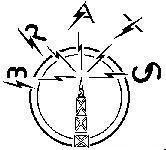 |
 |
 |
The award-winning monthly publication of
The Baltimore Radio Amateur Television Society
P.O.Box 5915 Baltimore, MD 21282-5915 |
November, 2005
Amateur Radio Antenna "CC&R Bill" Reintroduced in Congress
New York Congressman Steve Israel has reintroduced legislation that could make it easier for radio amateurs
living in communities with deed covenants, conditions and restrictions (CC&Rs) to erect suitable antennas.
Arkansas Congressman Mike Ross, WD5DVR, signed aboard as an original cosponsor of the "Amateur Radio Emergency Communications Consistency Act" (HR 3876). ARRL Hudson Division Director Frank Fallon, N2FF,
who attended Israel's public announcement of the bill September 19 on Long Island, pointed out the Amateur
Radio volunteers always fill the gap after other communication systems fail in an emergency or disaster. He
notes the bill's introduction comes in the immediate aftermath of positive media coverage of Amateur Radio's
response to the Hurricane Katrina disaster.
ARRL Calls on FCC to Shut Down Virginia BPL System
In support of Amateur Radio complaints of interference, the ARRL today formally asked the FCC to instruct the City of Manassass, Virginia, to shut down its broadband over power line (BPL) system. Communication Technologies (COMTek) operates the BPL system over the municipally owned electric power grid. The League says the facility has been the target of unresolved interference complaints dating back at least to early 2004, none of which has resulted "in any action or even interest" on the part of the FCC's Office of Engineering and Technology (OET) staff. In the meantime, the ARRL goes on to say, interference to local Amateur Radio stations continues.
"The Manassass system currently causes harmful interference, and it is not compliant with applicable FCC Part 15 regulations, including Section 15.5," the ARRL said in a 16-page filing to the OET and the FCC's Enforcement Bureau. "Whatever actions either Manassass Power or Communication Technologies Inc might have taken to relieve the problem have not been successful, and it persists to the present time. This is precisely the situation in which the system must be shut down, pending successful resolution of the severe interference."
Two years ago, the ARRL put Manassass officials on notice that the League would act on behalf of its members to ensure full compliance with FCC regulations once the city's BPL system, then in the trial stage, started up.
The ARRL and the complaining Manassass radio amateurs--George Tarnovsky, K4GVT, Donald Blasdell, W4HJL, and William South, N3OH--cite interference so severe that "no communications can be conducted in the amateur allocations subject to interference," said the ARRL, which accused the city of "stonewalling in the face of repeated complaints."
"The parties cannot be said to be working this out cooperatively, since the City of Manassass and its BPL operator are currently in full denial," the League said.
Correspondence and reports from Tarnovsky, Blasdell and South outlining repeated contacts with the BPL operator and a lack of effective resolution--and even public denial--of the interference, accompanied the League's filing. All three hams suggested city officials and COMTek were not acting in good faith in addressing the interference, which, Tarnovsky said, goes back to the very first Manassass BPL installations.
"They continue to publicly deny the interference issues at every opportunity without taking corrective action," Tarnovsky said in a letter to OET's James Burtle, referring to Manassass officials. The radio amateurs said efforts by the BPL operator to "notch" band segments have proven ineffective. "Our continued monitoring of the Manassass BPL system has shown they continuously open the notches and/or increase signal levels, subsequently interfering with licensed services again," he asserted. "This can only lead to one conclusion--they are not taking the interference issue seriously."
South noted this week that the BPL interference recorded to date occurred prior to any large-scale BPL deployment by Manassass. He speculated how much worse the interference will be when the system has 9000 subscribers instead of the current 900.
Field tests conducted not only by Manassass radio amateurs but by the US Department of the Navy established that the city's BPL system "was an interference generator at distances of hundreds of feet from the modems on overhead power lines," the ARRL wrote. "It was also, incidentally, determined that the system was susceptible to interference from nearby radio transmitters operating between 4 and 20 MHz."
[Full Story on ARRL website]
See also Pennsylvania Utility Story, Page 8
1 |
2 |
3 |
4 |
5 |
6 |
7 |
8 |
9 |
10 |
11 |
12
BRATS Home Page






